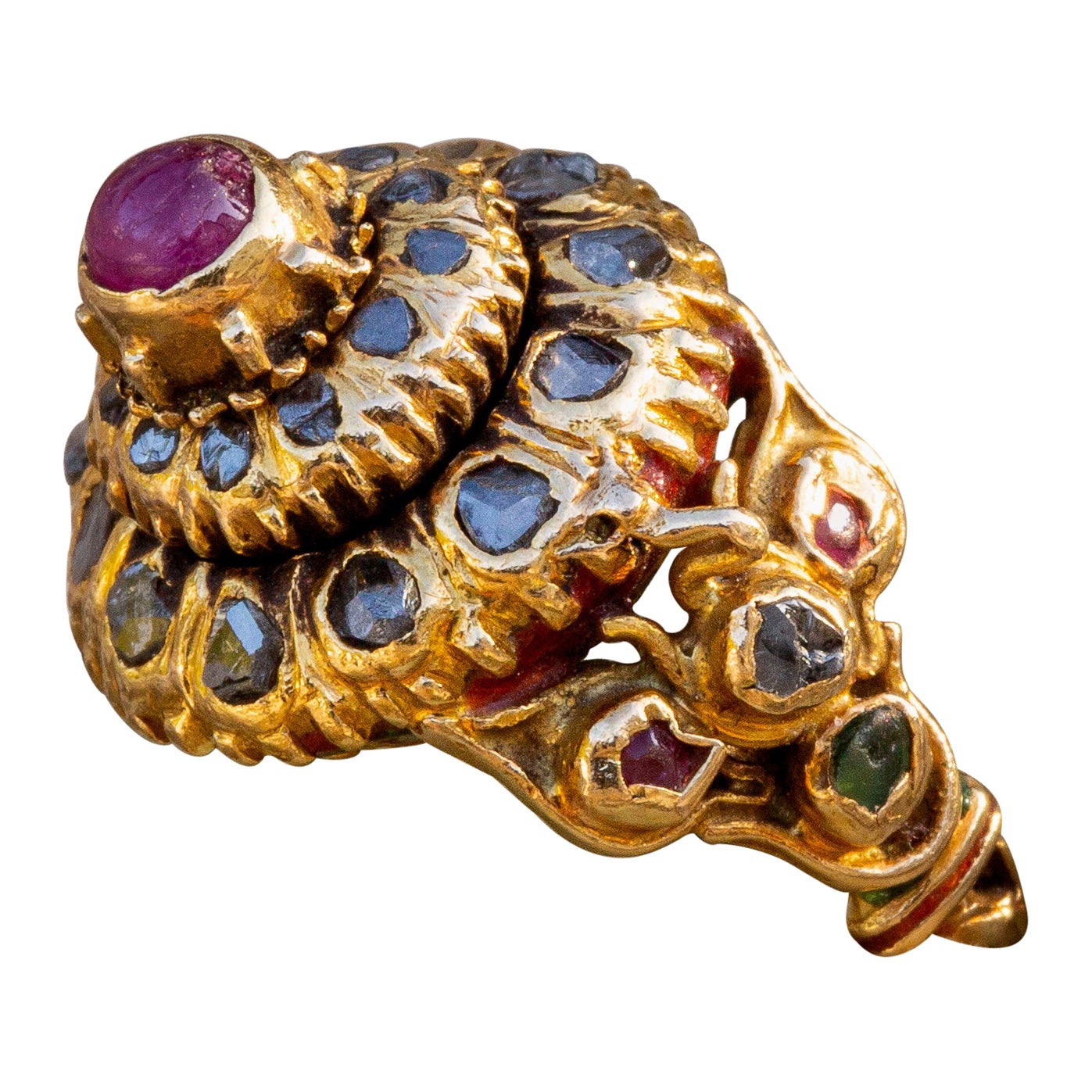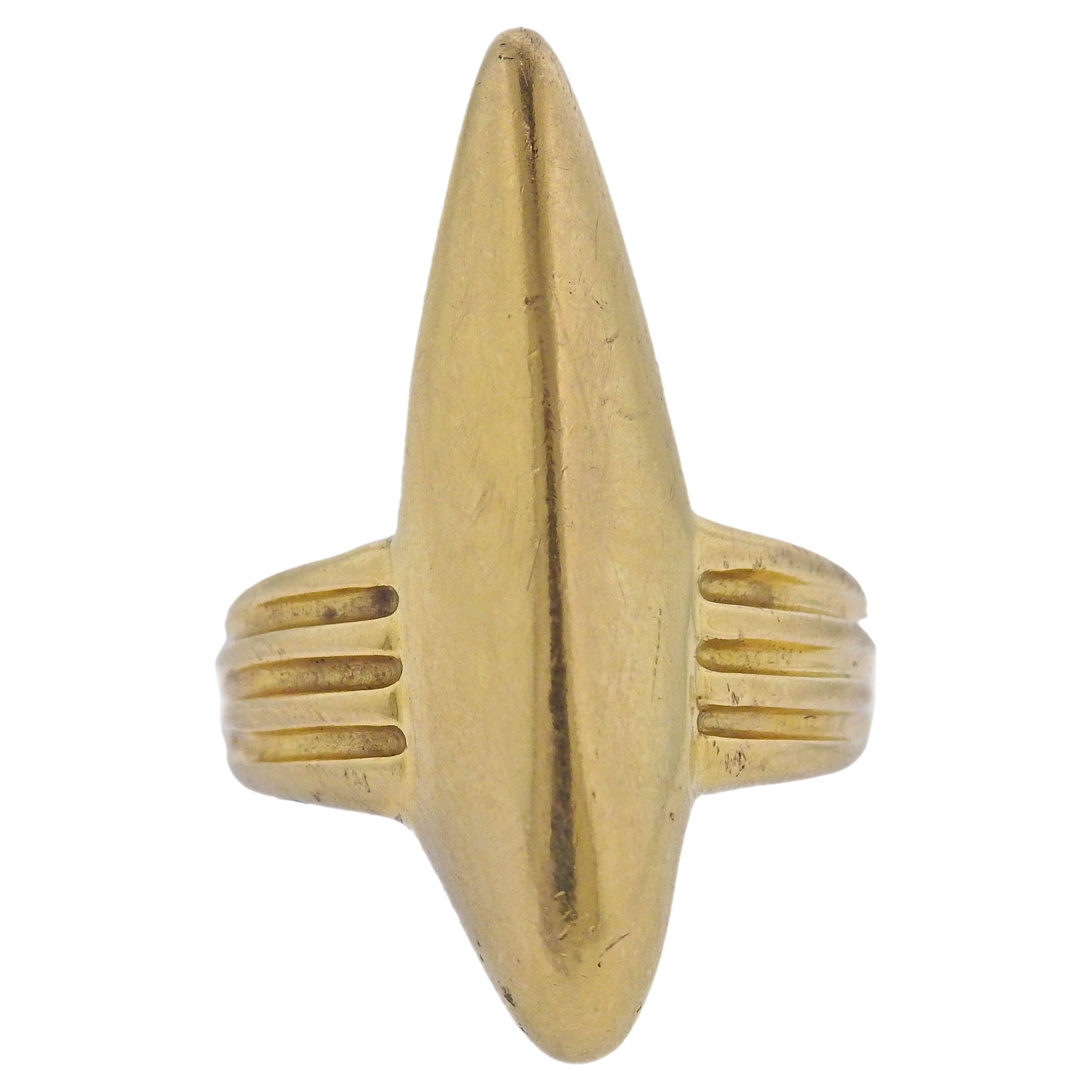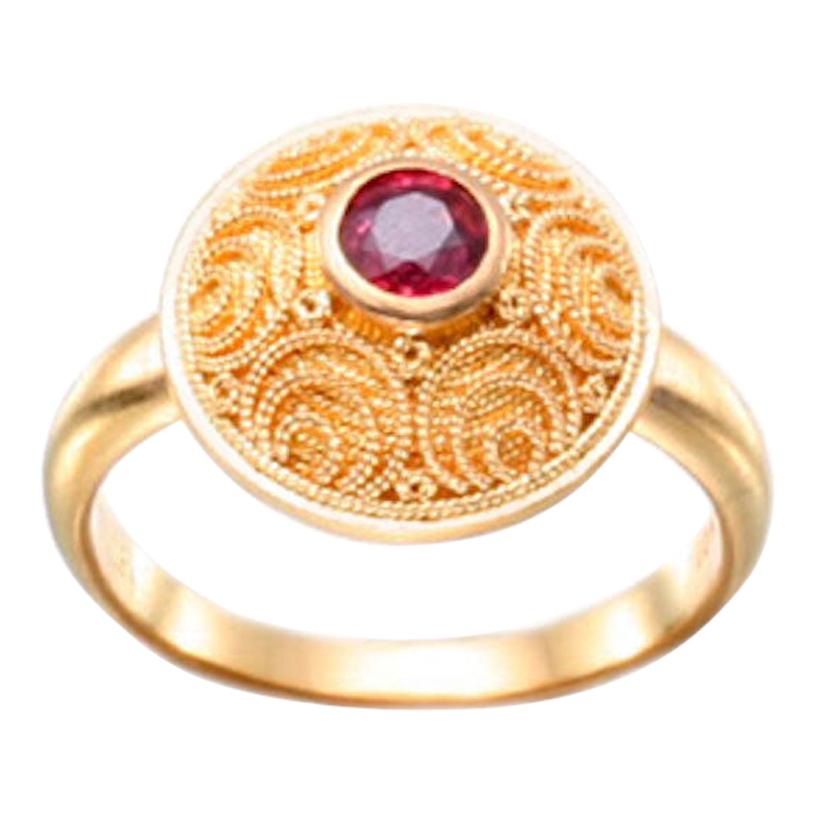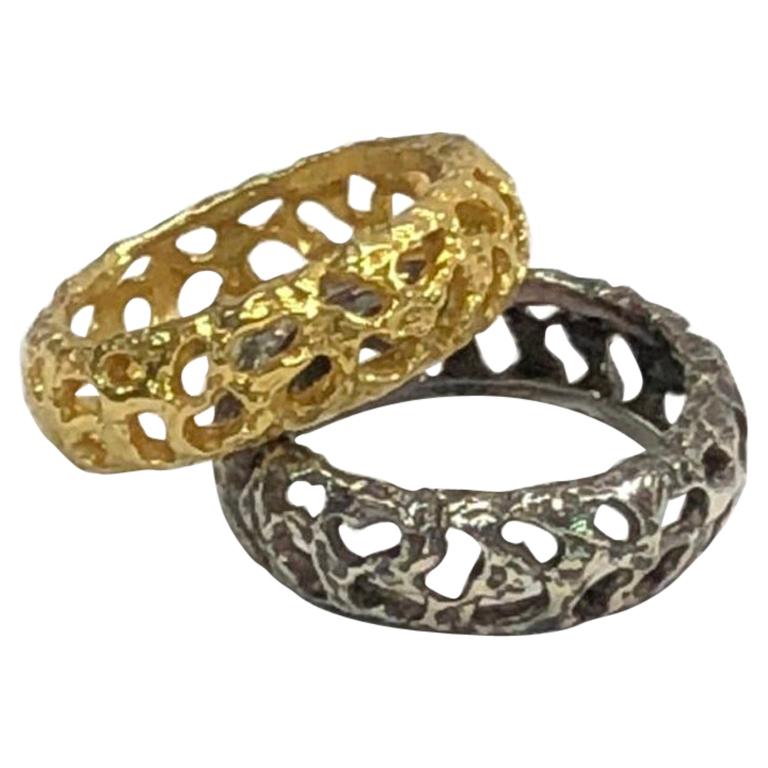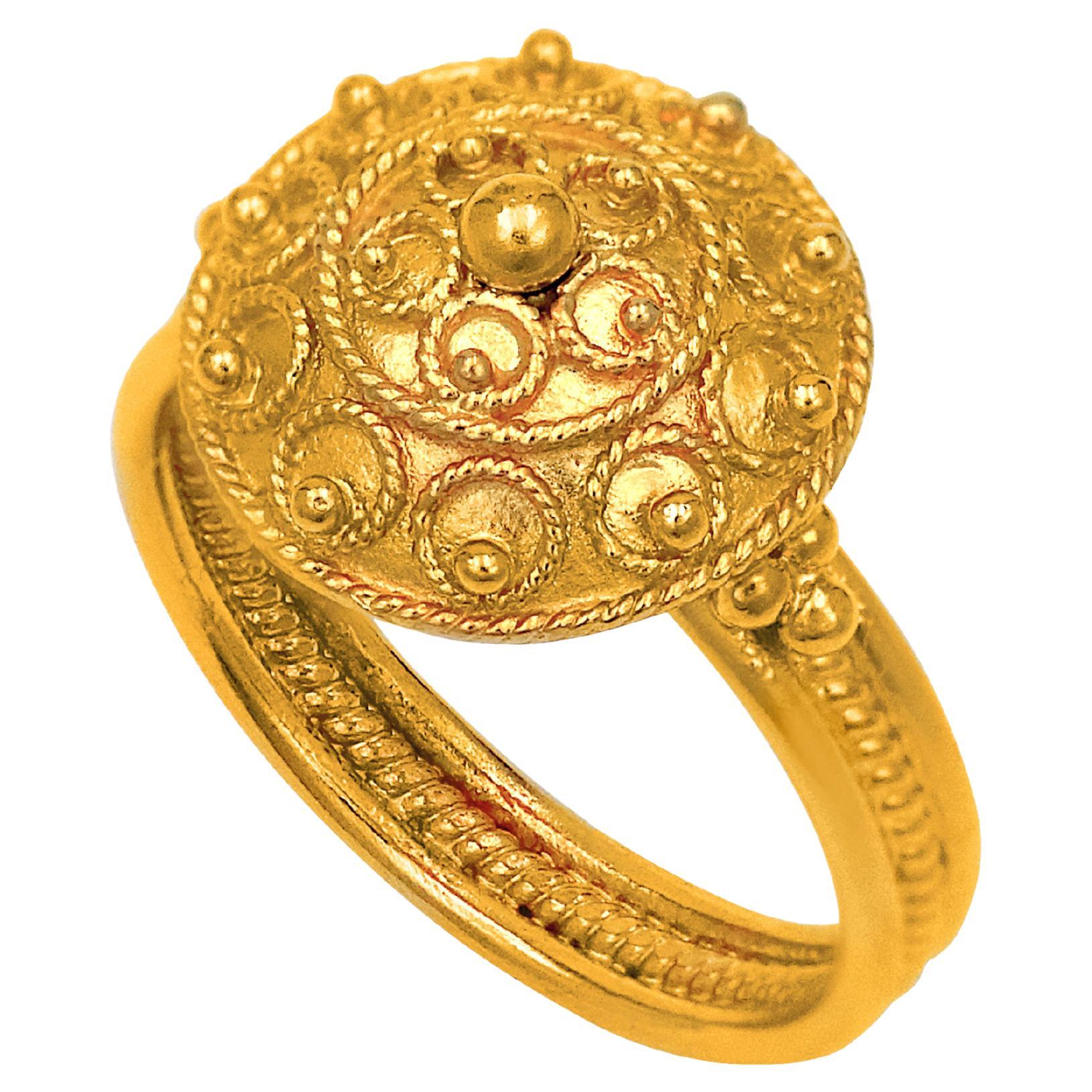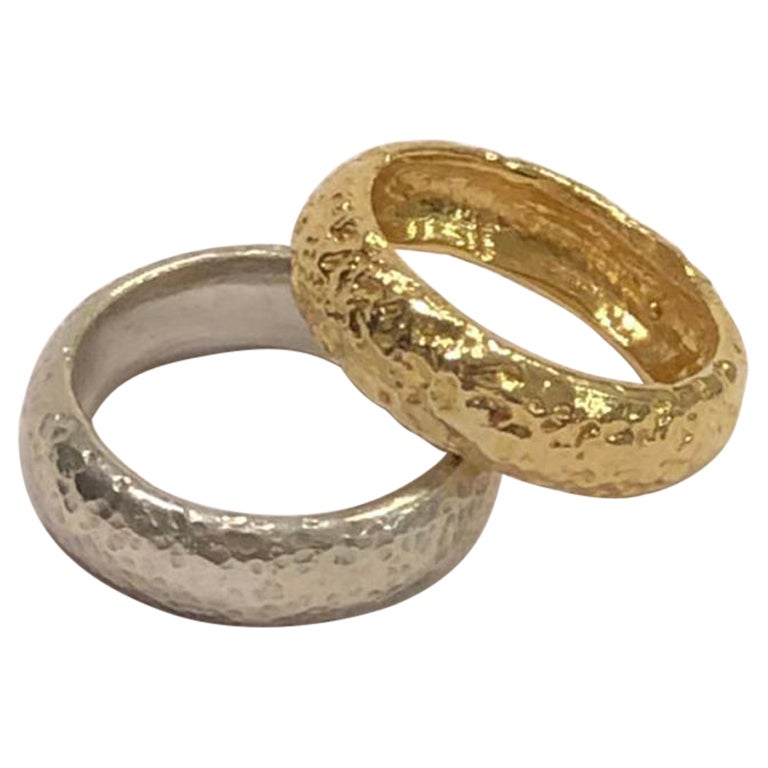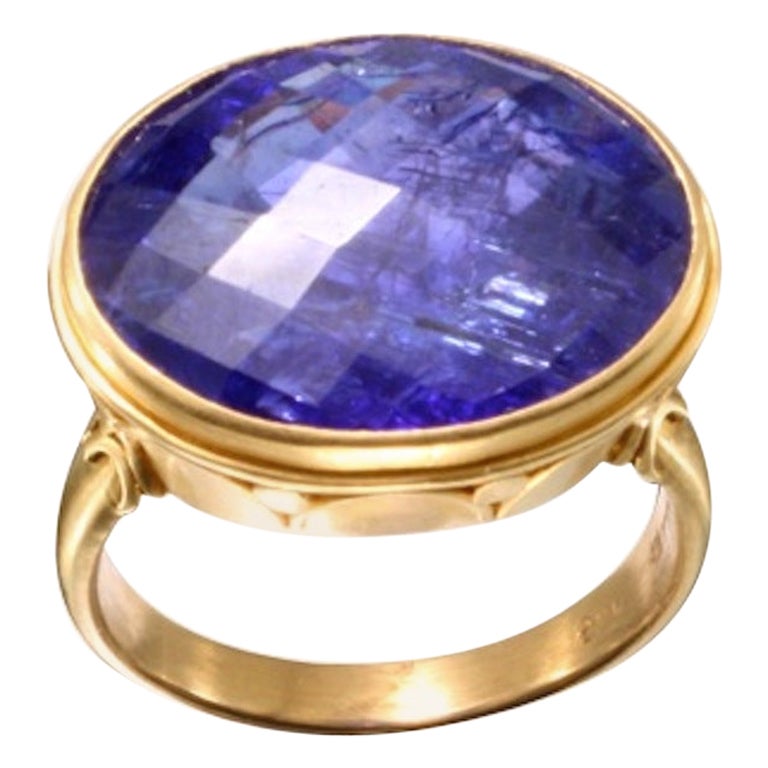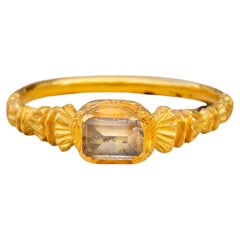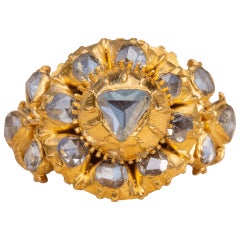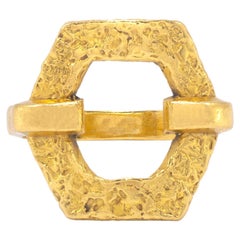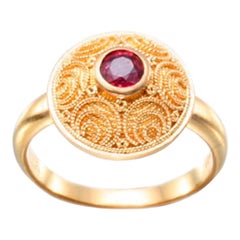
Royal Thai Siam Antique 18th Century Heavy 22K Gold Rare Naga Serpent Ring
View Similar Items
Video Loading
Want more images or videos?
Request additional images or videos from the seller
1 of 12
Royal Thai Siam Antique 18th Century Heavy 22K Gold Rare Naga Serpent Ring
About the Item
- Ring Size:6 US, Resizable
- Metal:
- Stone:
- Stone Cut:
- Place of Origin:
- Period:
- Date of Manufacture:1770
- Condition:Repaired: There has been a repair to one small area of the inner band , as evidenced in the photos.
- Seller Location:London, GB
- Reference Number:1stDibs: LU2845216277222
About the Seller
5.0
Vetted Seller
These experienced sellers undergo a comprehensive evaluation by our team of in-house experts.
Established in 2019
1stDibs seller since 2022
32 sales on 1stDibs
Typical response time: 11 hours
More From This SellerView All
- Royal Siam 'Thai' Museum-Grade 18th Century Ayutthaya Ceremonial RingLocated in London, GBThis incredibly ornate piece was made in Siam during the late Ayutthaya or early Rattanakosin Kingdom period. It dates to the late 18th and is a very rare example of a ceremonial ‘mondop’ or ‘pagoda’ ring. These rings were made for the monarchy and aristocratic class of Siam to be worn as part of the lavish adornment paraphernalia used in ceremonies. These elaborate rings were subsequently given as gifts to important visitors or other aristocratic families. A similar example is found in Musée National du Château de Fontainebleau and was originally presented to Napoléon-III by the ambassadors of King Mongkut of Siam (Rama IV) alongside hundreds of other lavish gifts in order to re-establish diplomatic relations between France and Siam in 1861. Among these gifts are old jewels from King Mongkut’s treasury, including the gold diamond mondop/pagoda ring (see photos). During this visit, the son of the Siamese ambassador, Khoumsombat, is photographed wearing a very similar tiered mondop ring with what also appears to be a ruby cabochon at the top (see photos). A ‘mondop’ is the tiered roof of a temple, for example that of Wat Phra Kaew in Bangkok, and is designed to be in the shape of the image of Buddha. The top tier of this ring features a bezel set star ruby cabochon while the rest of the bezel is covered with diamonds. The two outermost tiers rotate and are connected to the main body of the ring with a bifurcated rivet visible on the closed-back underside of the bezel, typical ornamentation of 18th century layered cluster rings. The arched shoulders are equally as ornate with bezel set rub over diamonds, emeralds and rubies appearing between foliate motifs and protruding serpent-esque decoration. The underside and outershank display bright red and green floral enamelling often seen on naga rings...Category
Antique Late 18th Century Thai More Rings
MaterialsDiamond, Emerald, Ruby, 22k Gold
- 16th Century Renaissance Gold Ring with Table Cut Rock Crystal 22K GoldLocated in London, GBA stunning example of a European renaissance ring dating to 1550-1600! A table-cut rock crystal is mounted in a closed back rub over setting. The quatrefoil bezel is cuffed with a re...Category
Antique 16th Century British Renaissance More Rings
MaterialsRock Crystal, 22k Gold
- Important 19th Century Royal Siam Diamond Cluster Ring Museum-Grade ThaiLocated in London, GBAn outstandingly rare mid-19th century royal Siam diamond cluster ring, made by the royal goldsmiths of the court of Bangkok. This is an extremely fine example of the jewellery commissioned and subsequently bestowed by the Kings of Siam, principally to be worn by participants in royal and aristocratic life-cycle ceremonies in the courts of Bangkok. In the mid-19th century, King Mongkut (Rama IV) of Siam also commissioned the courtly jewellers to create a number of faithful replicas of these ceremonial jewels to be offered as gifts to diplomatic families, important visitors and to Heads of State across the world when re-establishing diplomatic relationships. One such example (which is remarkably similar to the present ring) resides in the museum of the Château de Fontainebleau (item F1518C) where it was given as a gift from King Mongkut to Napoléon-III on the important ambassadorial visit of 1861 (see photos for a side by side comparison). Ceremonial Use: During the 19th century, many rings were made every year by the royal jewellers for ceremonial use. Examples of these lavish cluster rings being worn for these life-cycle ceremonies can be seen on old photos and paintings of the Royal Tonsure Ceremony, also known as ‘the cutting of the top-knot’ ceremony, which marked the transition from childhood into adulthood for all of the (many!) sons and daughters of the Siam royal family. The huge expansion in the number of royals in 19th century Siam stemmed from Kings Mongkut (Rama IV) and Chulalongkorn (Rama V) being highly polygamous. They had a joint total of 124 wives and 159 royal children, each requiring their own ceremonial regalia and princely jewels. As a result, Bangkok became home to some incredibly skilled goldsmiths in this period. The Tonsure ceremony was performed by the King, and lasted three days and three nights. All of the royal children would be dressed in the most splendid costumes and adorned with a vast amount of jewels on several parts of the body. Their costumes and jewels differed according to their title and rank. Diamonds for instance, would be bestowed to the highest ranking noble children. The royal children were allowed to keep their regalia and jewels as a present on entering adulthood to indicate their social status among society. Over the years, these royal jewels have been dispersed across the many noble families, with currently only a few important pieces remaining in the royal collection. Today, the number of royals in Thailand is contracting as the country follows the Chinese nobility system whereby with each generation the noble rank of a family decreases by one ranking so that eventually the majority of descendants will lose their noble status completely. This loss of royal privilege, coupled with the dilution of wealth has meant that items such as this ring become available on the open market. Following the end of the absolute monarchy in Thailand in 1932, many members of the royal family relocated to Europe and as a consequence, princely Thai items can occasionally be found in the European art market. Gift Exchange: In Siam culture, great importance is placed on the ancestral process of gift-exchange. During the reign of King Mongkut, close relationships with some powerful countries were cultivated in order to hold the balance of power and to save Siam from being colonised. The King used gift-exchange to establish diplomatic relations with other heads of state around the world, as well as with other kings, princes and sultans closer to home. He sent troupes of ambassadors to England (1857) and France (1861) with seemingly endless amounts of trunks filled with lavish gifts in order to dazzle the heads of state with the extraordinary quality and variety of Siam craftsmanship. These gifts consisted of faithful replicas of the Royal Regalia and objects belonging to the King himself; items and jewellery worn by him on his Tonsure ceremony and on his coronation day. Enormous time and effort was required by the Siam court to assemble these numerous gifts, as they emanated from the very same royal goldsmiths and courtly craftsman who had made the original ceremonial items. The most famous of these ceremonies took place at the Chateau de Fontainebleau in 1861. The painting by Jean-Léon Gérôme that immortalised the event prominently features the most spectacular of these gifts. Among the 150 gifts presented to Napoléon-III by the Siam ambassadors were two diamond-set rings, both of which are on display in the Musée du Chateau de Fontainebleau (item no. F1518C and F1519C). One of these rings is a rose cut diamond cluster and bears a striking resemblance to the ring we are offering. According to Bruley (2011), this ring, presented to Napoleon-III, was a faithful replica of the ring worn by King Mongkut on his own coronation day in 1851, which now resides in the Pavilion of Royal Regalia in Thailand. The Ring: From whichever angle the present ring is viewed, it is a masterpiece of design and a testament to the ingenuity and craftsmanship of the Siam royal goldsmiths. The bezel head is composed of two layers, the uppermost, containing the large triangle shaped table-cut diamond, is riveted to the main body of the ring. The second layer of the cluster is set with a further eight rose cut diamonds and this section allows for small rotation, typical of Siam jewellery...Category
Antique Mid-19th Century Thai Victorian Cluster Rings
MaterialsDiamond, 22k Gold
- Renaissance Early 17th Century Enamelled 22K Gold Rose Cut Garnet RingLocated in London, GBA stunning and rare example of a European renaissance ring dating to circa 1600! It would have originally been worn by a young women of a wealthy and noble family. The tear-drop shaped bezel is encircled by multiple cuffs enamelled in white. Intricate chased scrolled detailing continues down the shoulders with further evidence of enamelling. In the centre rests a rose cut closed back garnet gemstone (a later replacement). UK size G / US size 3.5, 1.79g, tested as 22k gold. The stone measures 4mm across. As the garnet stone replacement is not the perfect shape for the pear-shaped bezel, it could be easily replaced to a stone of your choice by a local jeweller! During the Renaissance, finger rings developed from the simple forms of the medieval period into miniature works of art, combining the skills of the chaser, engraver, enameller and stone...Category
Antique Early 17th Century English Renaissance Solitaire Rings
MaterialsGarnet, 22k Gold, Enamel
- Antique Thai Siam 19th Century Gold Princely Gem-Set Cluster Ring Ruby EmeraldLocated in London, GBA rare late 19th century gem-set princely gold cluster ring made in Siam (Thailand). This gorgeous and colourful gem-set cluster ring is intricately crafted in high-karat gold, by t...Category
Antique 19th Century Thai Cluster Rings
MaterialsDiamond, Ruby, Emerald, Gold
- Antique Italian 18th Century Georgian Gold Cameo Ring Bust of Medusa HardstoneLocated in London, GBA gorgeous 18th century Italian hardstone cameo ring. This beautiful four layered sardonyx cameo is carved from a single piece of agate with immense skill to reveal the bust of the G...Category
Antique Late 18th Century Italian Neoclassical Signet Rings
MaterialsAgate, Gold, 22k Gold
You May Also Like
- Lalaounis Greece 22k Gold RingBy Ilias LalaounisLocated in New York, NY22k gold ring by Ilias Lalaounis of Greece. Ring size 7.5 (EU 56) , top is 32mm wide. Marked: k22, Lalaounis mark, A21. Weight 10.2 grams.Category
20th Century Greek More Rings
Materials22k Gold
- 22k Gold Hexagon Textured RingLocated in New York, NY22k gold Hexagon ring features a beautiful contrast between Tagili Designs signature finish and a polish finish that gives this ring perfect dimension and texture. Part of the Essent...Category
21st Century and Contemporary American Artisan More Rings
Materials22k Gold, Gold
- Steven Battelle Ruby Ring 22K GoldBy Steven BattelleLocated in Soquel, CAA brilliant round 4mm 0.4 carat ruby is surrounded by domed delicate twist wire coils in this handmade 22K beauty. A matt-finish band complements. Currently ...Category
21st Century and Contemporary Balinese Contemporary Fashion Rings
MaterialsRuby, 22k Gold
- 22k Gold & Blackened Silver Stacking RingsLocated in New York, NY22k gold and blackened silver stacking rings. Organic finish is hand textured, hand carved and part of the power collection with Tagili Designs s...Category
21st Century and Contemporary American More Rings
MaterialsSilver, Gold, 22k Gold
- 22k Gold Era's Filigree Hammered RingLocated in Athens, GRThe Era’s ring. This ring brings together different eras of workmanship‘s. The center showcases the hammer technic surrounded by granulation beads one by o...Category
Mid-20th Century Greek Neoclassical More Rings
Materials22k Gold
- Dimos 22K Gold Filigree Bocola RingLocated in Athens, GRBocola design ring set in 22k yellow gold with circles of filigree and granulations of different size all around that half round ring. Each side ties the upper and bottom part with t...Category
Antique 15th Century and Earlier Greek Byzantine Dome Rings
Materials22k Gold
Recently Viewed
View AllMore Ways To Browse
Antique Emerald And Pearl Ring
Antique Pearl Emerald Gold Ring
22k Ruby Ring
22k Gold Ruby Ring
Buddha Ring
Emerald Seven Stone
Seven Stone Emerald
Spiner Ring
Victoria Band Ring
Half Bezel Emerald
Antique Zircon Rings
Antique Zircon Ring
Stone Mythical Sculpture
Rose Zircon Rings
Diamond Whale
Buddha Gemstone
Ruby Diamond 22k Gold Set
White Stone Buddha
